Wild edible mushroom hunting is one of the great things about living here in western Cascadia, aka the Pacific Northwest. There are a wide variety of edible mushrooms that grow in the temperate rain forest that lines western Oregon, Washington, and British Columbia.
There are many different varieties. Some of the most popular include chanterelles and oyster mushrooms, popping up in the forest for anyone who cares to look. Bland russulas pop up everywhere, ignored until they get taken over by a lobster mushroom, which makes them turn delicious. But the tastiest prize of all is the morel.
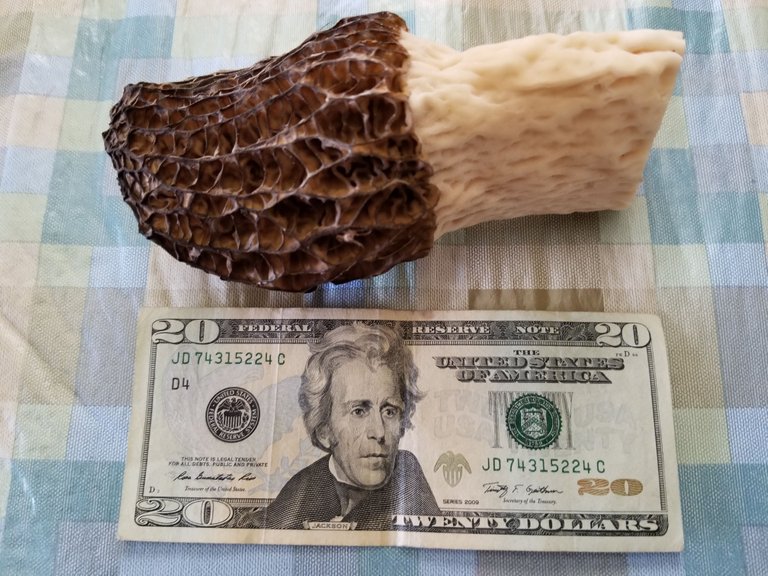
What a whopper!
Foraging For Wild Mushrooms
Here in western Washington, we are blessed with an abundance of edible wild mushrooms. Ever since I moved out here with my family, I've become more and more interested in foraging for edible mushrooms. On many of our hikes, we found enough chanterelles and lobsters to make a nice dinner.
We even paid for a permit to collect mushrooms inside national forests. It was only 10 bucks, and it kept us legal, although it's rare to run into anyone at all hiking in national forest areas. Those get a lot less traffic than parks, where collecting is usually prohibited anyway. Sadly, we have never collected anything close to the maximum 5 gallons per day.
I'm no stranger to identifying edible mushrooms, but I still haven't found any large, reliable collection spots. That's probably mostly a matter of sticking to close to the beaten path on our low-key family hikes. Some species, like morels, are also notoriously hard to spot in natural areas.
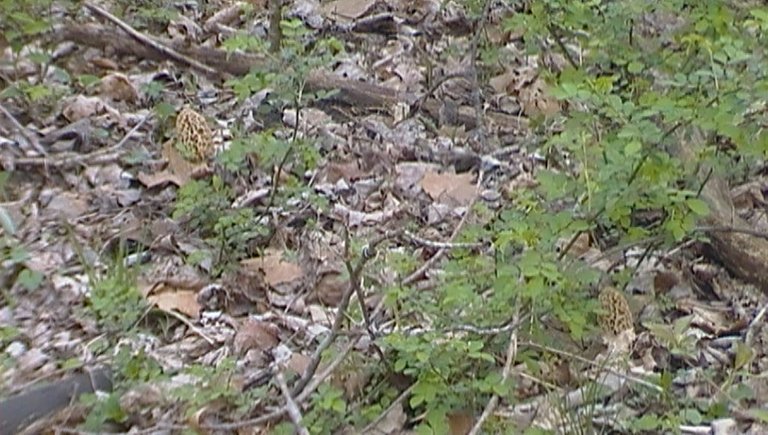
How many morels do you see?
The morel is one of the most delicious of all edible wild mushrooms. That fact is no secret, and I've seen them go for $25-$35 a pound at the farmer's market. People who know where to find morels generally keep that information a closely guarded secret. I've trained my eyes, but I’ve still never found morels out in the wild.
That is, until yesterday.
The Morel Mother Lode In Our Back Yard
I was doing some light gardening work with my daughter out in our yard. She was hand-trimming some grass that had come up around the edges of our compost pile, when she clipped something that looked weird. With her second look, she became the first one in our family to find a morel. And it was a whopper.
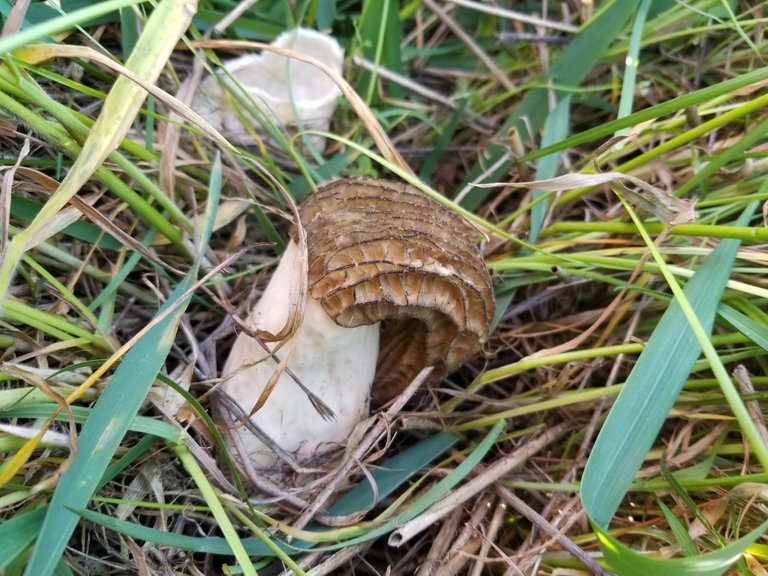
The second morel we found, and the stub of the first
Morels are pretty easy to identify, with the characteristic sponge-like external gills structure around the cap and the entirely hollow stem. We looked around for others in the immediate area, and we found a second for a total of two morel mushrooms on our very first day of finding them.
Today, I was mowing the lawn on my own while she was at school, and I found what looks like the granddaddy of all morels. It's a little bigger than my fist, and as long as a dollar bill, which is pretty awesome for a mushroom that costs twice as much as steak at the grocery store. Unfortunately, I didn't get a chance to weigh them.
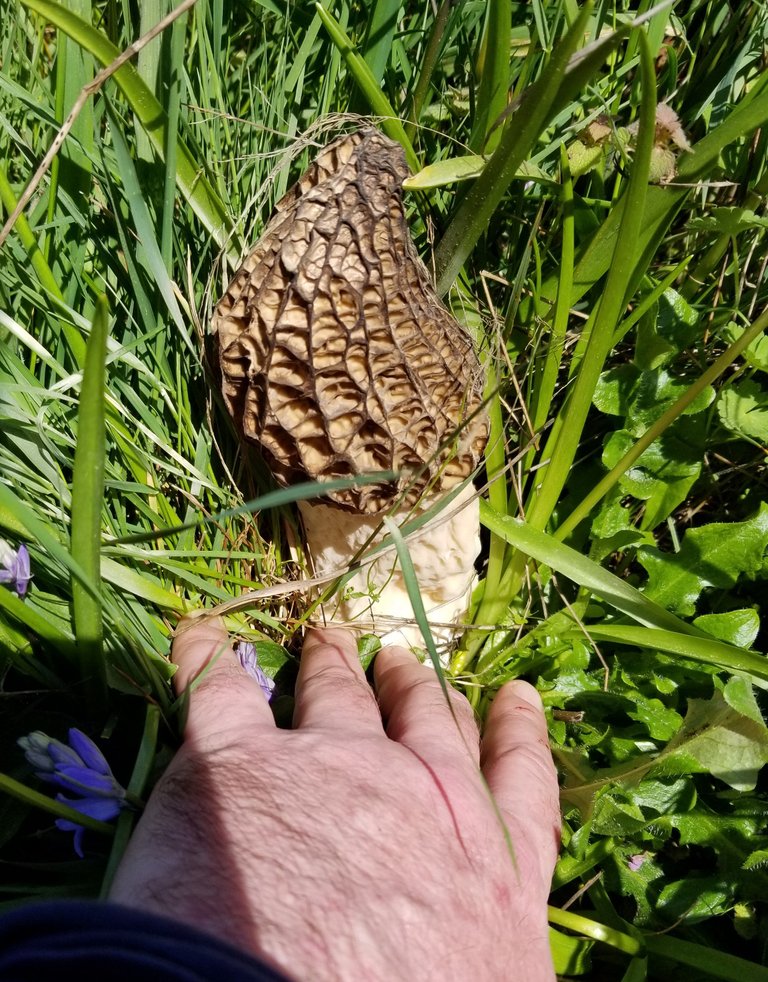
The big boy, in situ
I looked around the immediate area and found one that was already separated from its stem. It looked like I kicked off the cap without even noticing. Luckily the cap was undamaged. I also found another that is in a much earlier stage of development. I left the young one in place to spread more spores and help propagate more morels for the next flush.
The big one went into dinner with the rest of them, in a delicious cream sauce over angel hair pasta.
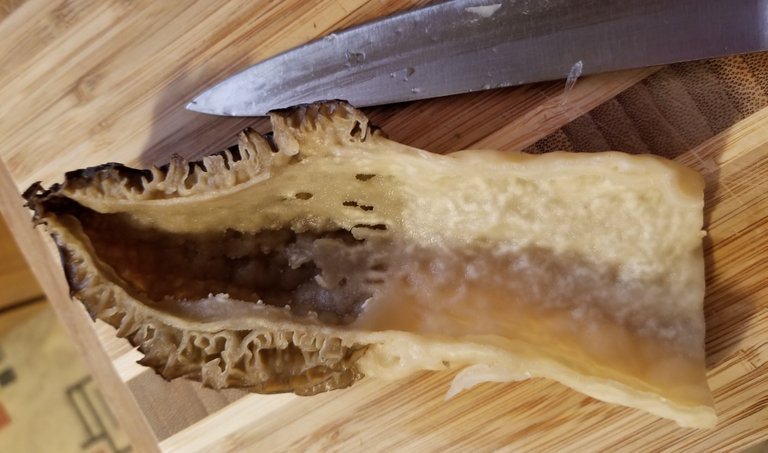
Morels are hollow all the way through
The meal was fantastic, and I can't wait to get out in the woods to forage. This time I'll do a little more advance research before I go looking so I can improve my chances to find a great spot. There is nothing like fresh morels!
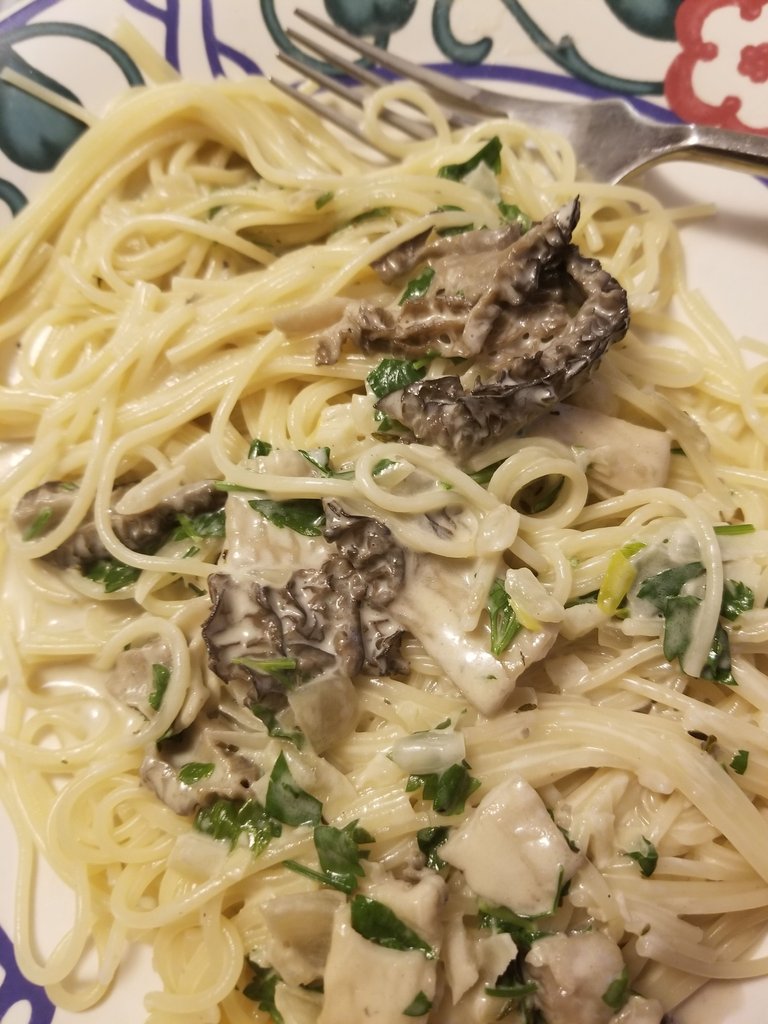
Morels in cream sauce over cappelini

- Chat about Steem and share a dank meme on my Discord
- Follow my curation trail on SteemAuto
- Earn more with your upvote with SmartSteem
- Get more upvotes and more followers with SteemFollower
Amazing! I can only imagine how good those taste!
They were amazing! So much better than dried...
This post has received a 3.74 % upvote from @boomerang.
In Venezuela we only have a few species of comfy mushrooms, although we only enjoy the so-called "campiñones", which we use in countless sauces or accompanying foods such as meats and fish.